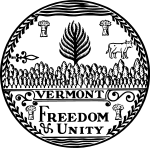| Revision as of 11:30, 4 December 2022 editSurtsicna (talk | contribs)Autopatrolled, Extended confirmed users130,246 edits Reverted 1 edit by 1.144.110.96 (talk): You are capable of using edit summaries and responding on the talk page. The refusal to do so and the intent to edit war instead will get you blocked. Your next revert will be a breach of 3RR and will see you blocked. Please respond instead.Tags: Twinkle Undo Reverted← Previous edit | Revision as of 11:35, 4 December 2022 edit undo1.144.110.96 (talk)No edit summaryTags: Undo Reverted Possible vandalismNext edit → | ||
| Line 829: | Line 829: | ||
| |- | |- | ||
| |{{Party shading/Democratic}}|] (Democratic) | |{{Party shading/Democratic}}|] (Democratic) | ||
| |} | |||
| ==Other high offices held== | |||
| This is a table of congressional seats, other federal offices, and other governorships held by governors. All representatives and senators mentioned represented Vermont except where noted.* denotes those offices which the governor resigned to take. | |||
| {| class="wikitable" | |||
| !rowspan="2"|Governor | |||
| !rowspan="2"|Gubernatorial term | |||
| !colspan="2"|] | |||
| !rowspan="2"|Other offices held | |||
| |- | |||
| !] | |||
| !] | |||
| |- | |||
| |] | |||
| |1789–1790 (Vt. Republic) | |||
| | | |||
| |align="center"|S | |||
| | | |||
| |- | |||
| |] | |||
| |1797–1807<br/>1808–1809 | |||
| | | |||
| |align="center"|S | |||
| | | |||
| |- | |||
| |] | |||
| |1807–1808 | |||
| |align="center"|H | |||
| |align="center"|S | |||
| | | |||
| |- | |||
| |] | |||
| |1820–1823 | |||
| |align="center"|H | |||
| | | |||
| | | |||
| |- | |||
| |] | |||
| |1823–1826 | |||
| | | |||
| | | |||
| |], ] | |||
| |- | |||
| |] | |||
| |1826–1828 | |||
| |align="center"|H | |||
| | | |||
| | | |||
| |- | |||
| |] | |||
| |1828–1831 | |||
| |align="center"|H | |||
| |align="center"|S | |||
| | | |||
| |- | |||
| |] | |||
| |1831–1835 | |||
| | | |||
| |align="center"|S | |||
| | | |||
| |- | |||
| |] | |||
| |1843–1844 | |||
| |align="center"|H | |||
| | | |||
| | | |||
| |- | |||
| |] | |||
| |1844–1846 | |||
| |align="center"|H | |||
| | | |||
| | | |||
| |- | |||
| |] | |||
| |1858–1860 | |||
| |align="center"|H | |||
| | | |||
| | | |||
| |- | |||
| |] | |||
| |1865–1867 | |||
| |align="center"|H | |||
| | | |||
| | | |||
| |- | |||
| |] | |||
| |1870 | |||
| |align="center"|H | |||
| | | |||
| |National Bank Examiner for Vermont | |||
| |- | |||
| |] | |||
| |1870–1872 | |||
| |align="center"|H | |||
| |align="center"|S | |||
| | | |||
| |- | |||
| |] | |||
| |1878–1880 | |||
| | | |||
| |align="center"|S | |||
| |] | |||
| |- | |||
| |] | |||
| |1886–1888 | |||
| | | |||
| | | |||
| |U.S. Treaty Commission to ], U.S. Land Commissioner for ] | |||
| |- | |||
| |] | |||
| |1888–1890 | |||
| | | |||
| |align="center"|S | |||
| | | |||
| |- | |||
| |] | |||
| |1890–1892 | |||
| | | |||
| |align="center"|S | |||
| | | |||
| |- | |||
| |] | |||
| |1927–1931 | |||
| |align="center"|H | |||
| | | |||
| | | |||
| |- | |||
| |] | |||
| |1937–1941 | |||
| | | |||
| |align="center"|S | |||
| | | |||
| |- | |||
| |] | |||
| |1941–1945 | |||
| | | |||
| | | |||
| |] | |||
| |- | |||
| |] | |||
| |1947–1950 | |||
| | | |||
| |align="center"|S | |||
| |] | |||
| |- | |||
| |] | |||
| |1959–1961 | |||
| |align="center"|H | |||
| |align="center"|S | |||
| | | |||
| |- | |||
| |] | |||
| |1985–1991 | |||
| | | |||
| | | |||
| |]; ] | |||
| |} | |||
| ==Living former governors of Vermont== | |||
| As of {{date}}, there are five living former governors of Vermont. The oldest is ] (served 1973–1977, born 1932). The most recent governor of Vermont to die was ] (served 1963–1969, born 1924) on April 26, 2018. The most recently serving governor of Vermont to die was ] (served 1977–1985 and 1991, born 1927), who died in office on August 13, 1991. | |||
| {| class="wikitable" | |||
| !Governor!!Gubernatorial term!!Date of birth (and age) | |||
| |- | |||
| |] | |||
| |1973–1977 | |||
| |{{birth date and age|1932|08|19}} | |||
| |- | |||
| |] | |||
| |1985–1991 | |||
| |{{birth date and age|1933|09|28}} | |||
| |- | |||
| |] | |||
| |1991–2003 | |||
| |{{birth date and age|1948|11|17}} | |||
| |- | |||
| |] | |||
| |2003–2011 | |||
| |{{birth date and age|1951|06|21}} | |||
| |- | |||
| |] | |||
| |2011–2017 | |||
| |{{birth date and age|1956|03|24}} | |||
| |} | |} | ||
| Line 834: | Line 1,018: | ||
| From the founding of the ] in the 1850s until the 1960s, only Republicans won general elections for Vermont's statewide offices. One method that made this possible was imposition of the "Mountain Rule." This rule was among informal mechanisms which restricted the pool of candidates for any election.<ref>, sos.vermont.gov</ref> | From the founding of the ] in the 1850s until the 1960s, only Republicans won general elections for Vermont's statewide offices. One method that made this possible was imposition of the "Mountain Rule." This rule was among informal mechanisms which restricted the pool of candidates for any election.<ref>, sos.vermont.gov</ref> | ||
| Under the provisions of the Mountain Rule, one U.S. |
Under the provisions of the Mountain Rule, one U.S. Senator was a resident of the east side of the ] and one resided on the west side, and the governorship and lieutenant governorship alternated between residents of the east and west side. Nominees for Governor and Lieutenant Governor were allowed two one-year terms and, later, one two-year term. For nearly 100 years, likely ] candidates for office in ] agreed to abide by the Mountain Rule in the interests of party unity. Several factors led to the eventual weakening of the Mountain Rule, including the long time political dispute between the ] (conservative) and ]–] (liberal) wings of the party; primaries rather than conventions to select nominees; the direct election of ]; and several active third parties, including the ], the ], and the ] movement. In the 1960s, the rise of the ] and the construction of ] also contributed to the end of the Mountain Rule. Though I-89 is a north-south route, it traverses Vermont from southeast to northwest for the majority of its length within the state and changed the way residents view how it is divided.<ref>, New York Times, February 12, 1895</ref><ref>, by Samuel B. Hand, Vermont History Magazine, published by Vermont Historical Society, Summer/Fall 2003, pages 139 to 151</ref> | ||
| ==References== | ==References== | ||
Revision as of 11:35, 4 December 2022
The governor of Vermont is the U.S. state's head of government. As of 2015, Vermont is one of only two U.S. states (New Hampshire being the other) that elects governors for two-year terms. Until 1870, Vermont elected its governors for one-year terms. Isaac Tichenor, Jonas Galusha, Erastus Fairbanks, and Richard A. Snelling each served non-consecutive terms, while Thomas Chittenden served non consecutive terms as Governor of the Vermont Republic.
List
As the independent Vermont Republic
See also: Vermont Republic| # | Portrait | Governor | Took office | Left office | Party | Lieutenant Governor | |
|---|---|---|---|---|---|---|---|
| 1 | 
|
Thomas Chittenden | March 1778 | October 1789 | No party | Joseph Marsh
(1778–1779) |
No party |
| Benjamin Carpenter
(1779–1781) |
No party | ||||||
| Elisha Payne
(1781–1782) |
No party | ||||||
| Paul Spooner
(1782–1787) |
No party | ||||||
| Joseph Marsh
(1787–1790) |
No party | ||||||
| 2 | 
|
Moses Robinson | October 1789 | October 1790 | No party | ||
| 3 | 
|
Thomas Chittenden | October 1790 | October 1791 | No party | Peter Olcott
(1790–1794) |
No party |
As a U.S. state
- Political party
Democratic (6) Democratic-Republican (6) Federalist (3) No party (1) National Republican (2) Republican (54) Whig (8)
| # | Portrait | Governor | Took office | Left office | Lieutenant Governor | Party | Side of the Green Mountains |
|---|---|---|---|---|---|---|---|
| 1 | 
|
Thomas Chittenden | October 1790 | August 25, 1797 | Jonathan Hunt | Independent | West |
| Paul Brigham | |||||||
| 2 | 
|
Paul Brigham | August 25, 1797 | October 16, 1797 | Democratic-Republican | East | |
| 3 | 
|
Isaac Tichenor | October 16, 1797 | October 9, 1807 | Federalist | West | |
| 4 | 
|
Israel Smith | October 9, 1807 | October 14, 1808 | Democratic-Republican | West | |
| 5 | 
|
Isaac Tichenor | October 14, 1808 | October 14, 1809 | Federalist | West | |
| 6 | 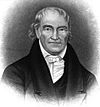
|
Jonas Galusha | October 14, 1809 | October 23, 1813 | Democratic-Republican | West | |
| 7 | 
|
Martin Chittenden | October 23, 1813 | October 14, 1815 | William Chamberlain | Federalist | West |
| 8 | 
|
Jonas Galusha | October 14, 1815 | October 23, 1820 | Paul Brigham | Democratic-Republican | West |
| 9 | 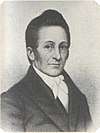
|
Richard Skinner | October 23, 1820 | October 10, 1823 | William Cahoon | Democratic-Republican | West |
| Aaron Leland | |||||||
| 10 | 
|
Cornelius P. Van Ness | October 10, 1823 | October 13, 1826 | Democratic-Republican | West | |
| 11 | 
|
Ezra Butler | October 13, 1826 | October 10, 1828 | National Republican | East | |
| Henry Olin | |||||||
| 12 | 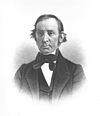
|
Samuel C. Crafts | October 10, 1828 | October 18, 1831 | Mark Richards | National Republican | East |
| 13 | 
|
William A. Palmer | October 18, 1831 | November 2, 1835 | Lebbeus Egerton | Anti-Masonic | East |
| Silas H. Jennison (Whig) | |||||||
| 14 | 
|
Silas H. Jennison | November 2, 1835 | October 15, 1841 | vacant | Whig | West |
| David M. Camp | |||||||
| 15 | 
|
Charles Paine | October 15, 1841 | October 13, 1843 | Waitstill R. Ranney | Whig | East |
| 16 | 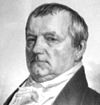
|
John Mattocks | October 13, 1843 | October 11, 1844 | Horace Eaton | Whig | East |
| 17 | 
|
William Slade | October 11, 1844 | October 9, 1846 | Whig | West | |
| 18 | 
|
Horace Eaton | October 9, 1846 | October 1848 | Leonard Sargeant | Whig | East |
| 19 | 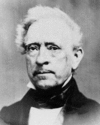
|
Carlos Coolidge | October 1848 | October 11, 1850 | Robert Pierpoint | Whig | East |
| 20 | 
|
Charles K. Williams | October 11, 1850 | October 1852 | Julius Converse | Whig | West |
| 21 | 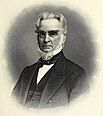
|
Erastus Fairbanks | October 1852 | October 27, 1853 | William C. Kittredge | Whig | East |
| 22 | 
|
John S. Robinson | October 27, 1853 | October 13, 1854 | Jefferson P. Kidder | Democratic | West |
| 23 | 
|
Stephen Royce | October 13, 1854 | October 10, 1856 | Ryland Fletcher | Whig (1st term) | West |
| Republican (2nd term) | |||||||
| 24 | 
|
Ryland Fletcher | October 10, 1856 | October 10, 1858 | James M. Slade | Republican | East |
| 25 | 
|
Hiland Hall | October 10, 1858 | October 12, 1860 | Burnham Martin | Republican | West |
| 26 | 
|
Erastus Fairbanks | October 12, 1860 | October 11, 1861 | Levi Underwood | Republican | East |
| 27 | 
|
Frederick Holbrook | October 11, 1861 | October 9, 1863 | Republican | East | |
| Paul Dillingham | |||||||
| 28 | 
|
J. Gregory Smith | October 9, 1863 | October 13, 1865 | Republican | West | |
| 29 | 
|
Paul Dillingham | October 13, 1865 | October 13, 1867 | Abraham B. Gardner | Republican | East |
| 30 | 
|
John B. Page | October 13, 1867 | October 15, 1869 | Stephen Thomas | Republican | West |
| 31 | 
|
Peter T. Washburn | October 15, 1869 | February 7, 1870 | George W. Hendee | Republican | East |
| 32 | 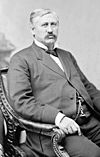
|
George W. Hendee | February 7, 1870 | October 6, 1870 | George N. Dale | Republican | West |
| 33 | 
|
John W. Stewart | October 6, 1870 | October 3, 1872 | Republican | West | |
| 34 | 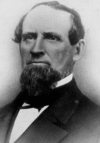
|
Julius Converse | October 3, 1872 | October 8, 1874 | Russell S. Taft | Republican | East |
| 35 | 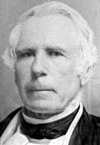
|
Asahel Peck | October 8, 1874 | October 5, 1876 | Lyman G. Hinckley | Republican | West |
| 36 | 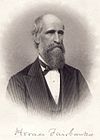
|
Horace Fairbanks | October 5, 1876 | October 3, 1878 | Redfield Proctor | Republican | East |
| 37 | 
|
Redfield Proctor | October 3, 1878 | October 7, 1880 | Eben Pomeroy Colton | Republican | West |
| 38 | 
|
Roswell Farnham | October 7, 1880 | October 5, 1882 | John L. Barstow | Republican | East |
| 39 | 
|
John L. Barstow | October 5, 1882 | October 2, 1884 | Samuel E. Pingree | Republican | West |
| 40 | 
|
Samuel E. Pingree | October 2, 1884 | October 7, 1886 | Ebenezer J. Ormsbee | Republican | East |
| 41 | 
|
Ebenezer J. Ormsbee | October 7, 1886 | October 4, 1888 | Levi K. Fuller | Republican | West |
| 42 | 
|
William P. Dillingham | October 4, 1888 | October 2, 1890 | Urban A. Woodbury | Republican | East |
| 43 | 
|
Carroll S. Page | October 2, 1890 | October 6, 1892 | Henry A. Fletcher | Republican | West |
| 44 | 
|
Levi K. Fuller | October 6, 1892 | October 4, 1894 | F. Stewart Stranahan | Republican | East |
| 45 | 
|
Urban A. Woodbury | October 4, 1894 | October 8, 1896 | Zophar M. Mansur | Republican | West |
| 46 | 
|
Josiah Grout | October 8, 1896 | October 6, 1898 | Nelson W. Fisk | Republican | East |
| 47 | 
|
Edward C. Smith | October 6, 1898 | October 4, 1900 | Henry C. Bates | Republican | West |
| 48 | 
|
William W. Stickney | October 4, 1900 | October 3, 1902 | Martin F. Allen | Republican | East |
| 49 | 
|
John G. McCullough | October 3, 1902 | October 6, 1904 | Zed S. Stanton | Republican | West |
| 50 | 
|
Charles J. Bell | October 6, 1904 | October 4, 1906 | Charles H. Stearns | Republican | East |
| 51 | 
|
Fletcher D. Proctor | October 4, 1906 | October 8, 1908 | George H. Prouty | Republican | West |
| 52 | 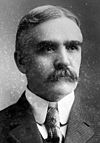
|
George H. Prouty | October 8, 1908 | October 5, 1910 | John A. Mead | Republican | East |
| 53 | 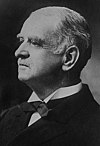
|
John A. Mead | October 5, 1910 | October 3, 1912 | Leighton P. Slack | Republican | West |
| 54 | 
|
Allen M. Fletcher | October 3, 1912 | January 7, 1915 | Frank E. Howe | Republican | East |
| 55 | 
|
Charles W. Gates | January 7, 1915 | January 4, 1917 | Hale K. Darling | Republican | West |
| 56 | 
|
Horace F. Graham | January 4, 1917 | January 9, 1919 | Roger W. Hulburd | Republican | East |
| 57 | 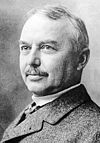
|
Percival W. Clement | January 9, 1919 | January 6, 1921 | Mason S. Stone | Republican | West |
| 58 | 
|
James Hartness | January 6, 1921 | January 4, 1923 | Abram W. Foote | Republican | East |
| 59 | 
|
Redfield Proctor Jr. | January 4, 1923 | January 8, 1925 | Franklin S. Billings | Republican | West |
| 60 | 
|
Franklin S. Billings | January 8, 1925 | January 6, 1927 | Walter K. Farnsworth | Republican | East |
| 61 | 
|
John E. Weeks | January 6, 1927 | January 8, 1931 | Hollister Jackson Stanley C. Wilson |
Republican | West |
| 62 | 
|
Stanley C. Wilson | January 8, 1931 | January 10, 1935 | Benjamin Williams Charles Manley Smith |
Republican | East |
| 63 | 
|
Charles M. Smith | January 10, 1935 | January 7, 1937 | George D. Aiken | Republican | West |
| 64 | 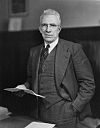
|
George David Aiken | January 7, 1937 | January 9, 1941 | William H. Wills | Republican | East |
| 65 | 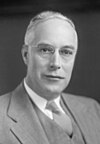
|
William H. Wills | January 9, 1941 | January 4, 1945 | Mortimer R. Proctor | Republican | West |
| 66 | 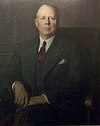
|
Mortimer R. Proctor | January 4, 1945 | January 9, 1947 | Lee E. Emerson | Republican | West |
| 67 | 
|
Ernest W. Gibson Jr. | January 9, 1947 | January 16, 1950 | Republican | East | |
| Harold J. Arthur | |||||||
| 68 | 
|
Harold J. Arthur | January 16, 1950 | January 4, 1951 | vacant | Republican | West |
| 69 | 
|
Lee E. Emerson | January 4, 1951 | January 6, 1955 | Joseph B. Johnson | Republican | East |
| 70 | 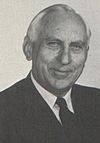
|
Joseph B. Johnson | January 6, 1955 | January 8, 1959 | Consuelo N. Bailey Robert T. Stafford |
Republican | East |
| 71 | 
|
Robert T. Stafford | January 8, 1959 | January 5, 1961 | Robert S. Babcock | Republican | West |
| 72 | 
|
F. Ray Keyser Jr. | January 5, 1961 | January 10, 1963 | Ralph A. Foote (Republican) | Republican | East |
| 73 | 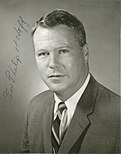
|
Philip H. Hoff | January 10, 1963 | January 9, 1969 | Democratic | West | |
| John J. Daley (Democratic) | |||||||
| 74 | 
|
Deane C. Davis | January 9, 1969 | January 4, 1973 | John S. Burgess (Republican) | Republican | East |
| 75 | 
|
Thomas P. Salmon | January 4, 1973 | January 6, 1977 | Brian D. Burns (Democratic) | Democratic | East |
| 76 | 
|
Richard A. Snelling | January 6, 1977 | January 10, 1985 | T. Garry Buckley (Republican) | Republican | West |
| Madeleine Kunin (Democratic) | |||||||
| Peter P. Smith (Republican) | |||||||
| 77 | 
|
Madeleine Kunin | January 10, 1985 | January 10, 1991 | Democratic | West | |
| Howard Dean (Democratic) | |||||||
| 78 | 
|
Richard A. Snelling | January 10, 1991 | August 13, 1991 | Republican | West | |
| 79 | 
|
Howard Dean | August 13, 1991 | January 9, 2003 | vacant | Democratic | West |
| Barbara W. Snelling (Republican) | |||||||
| Douglas Racine (Democratic) | |||||||
| 80 | 
|
Jim Douglas | January 9, 2003 | January 6, 2011 | Brian Dubie (Republican) | Republican | West |
| 81 | 
|
Peter Shumlin | January 6, 2011 | January 5, 2017 | Phil Scott (Republican) | Democratic | East |
| 82 | 
|
Phil Scott | January 5, 2017 | Incumbent | David Zuckerman (Progressive/Democratic) | Republican | East |
| Molly Gray (Democratic) |
Other high offices held
This is a table of congressional seats, other federal offices, and other governorships held by governors. All representatives and senators mentioned represented Vermont except where noted.* denotes those offices which the governor resigned to take.
| Governor | Gubernatorial term | U.S. Congress | Other offices held | |
|---|---|---|---|---|
| House | Senate | |||
| Moses Robinson | 1789–1790 (Vt. Republic) | S | ||
| Isaac Tichenor | 1797–1807 1808–1809 |
S | ||
| Israel Smith | 1807–1808 | H | S | |
| Richard Skinner | 1820–1823 | H | ||
| Cornelius P. Van Ness | 1823–1826 | United States Minister to Spain, Collector of the Port of New York | ||
| Ezra Butler | 1826–1828 | H | ||
| Samuel C. Crafts | 1828–1831 | H | S | |
| William A. Palmer | 1831–1835 | S | ||
| John Mattocks | 1843–1844 | H | ||
| William Slade | 1844–1846 | H | ||
| Hiland Hall | 1858–1860 | H | ||
| Paul Dillingham | 1865–1867 | H | ||
| George W. Hendee | 1870 | H | National Bank Examiner for Vermont | |
| John W. Stewart | 1870–1872 | H | S | |
| Redfield Proctor | 1878–1880 | S | United States Secretary of War | |
| Ebenezer J. Ormsbee | 1886–1888 | U.S. Treaty Commission to Pyramid Lake Paiute Tribe Reservation, U.S. Land Commissioner for Samoa | ||
| William P. Dillingham | 1888–1890 | S | ||
| Carroll S. Page | 1890–1892 | S | ||
| John E. Weeks | 1927–1931 | H | ||
| George Aiken | 1937–1941 | S | ||
| William H. Wills | 1941–1945 | Member, Federal Communications Commission | ||
| Ernest W. Gibson Jr. | 1947–1950 | S | Judge, United States District Court for the District of Vermont | |
| Robert Stafford | 1959–1961 | H | S | |
| Madeleine M. Kunin | 1985–1991 | United States Deputy Secretary of Education; United States Ambassador to Switzerland and Liechtenstein | ||
Living former governors of Vermont
As of 1 January 2025, there are five living former governors of Vermont. The oldest is Thomas P. Salmon (served 1973–1977, born 1932). The most recent governor of Vermont to die was Philip H. Hoff (served 1963–1969, born 1924) on April 26, 2018. The most recently serving governor of Vermont to die was Richard A. Snelling (served 1977–1985 and 1991, born 1927), who died in office on August 13, 1991.
| Governor | Gubernatorial term | Date of birth (and age) |
|---|---|---|
| Thomas P. Salmon | 1973–1977 | (1932-08-19) August 19, 1932 (age 92) |
| Madeleine M. Kunin | 1985–1991 | (1933-09-28) September 28, 1933 (age 91) |
| Howard Dean | 1991–2003 | (1948-11-17) November 17, 1948 (age 76) |
| Jim Douglas | 2003–2011 | (1951-06-21) June 21, 1951 (age 73) |
| Peter Shumlin | 2011–2017 | (1956-03-24) March 24, 1956 (age 68) |
Mountain Rule
From the founding of the Republican Party in the 1850s until the 1960s, only Republicans won general elections for Vermont's statewide offices. One method that made this possible was imposition of the "Mountain Rule." This rule was among informal mechanisms which restricted the pool of candidates for any election.
Under the provisions of the Mountain Rule, one U.S. Senator was a resident of the east side of the Green Mountains and one resided on the west side, and the governorship and lieutenant governorship alternated between residents of the east and west side. Nominees for Governor and Lieutenant Governor were allowed two one-year terms and, later, one two-year term. For nearly 100 years, likely Republican candidates for office in Vermont agreed to abide by the Mountain Rule in the interests of party unity. Several factors led to the eventual weakening of the Mountain Rule, including the long time political dispute between the Proctor (conservative) and Aiken–Gibson (liberal) wings of the party; primaries rather than conventions to select nominees; the direct election of U.S. Senators; and several active third parties, including the Progressives, the Prohibition Party, and the Local Option movement. In the 1960s, the rise of the Vermont Democratic Party and the construction of Interstate 89 also contributed to the end of the Mountain Rule. Though I-89 is a north-south route, it traverses Vermont from southeast to northwest for the majority of its length within the state and changed the way residents view how it is divided.
References
- pdf Archived 2016-01-12 at the Wayback Machine
- Scott's third term expires in January 2023.
- The Direct Primary, sos.vermont.gov
- Newspaper article, The Mountain Rule in Vermont, New York Times, February 12, 1895
- Magazine article, Mountain Rule Revisited, by Samuel B. Hand, Vermont History Magazine, published by Vermont Historical Society, Summer/Fall 2003, pages 139 to 151
| Chief executives of the United States | |
|---|---|
| Federal | |
| State governors (current list) |
|
| Territorial (current list) | |
| Defunct | |
| Governors of Vermont | ||
|---|---|---|
| Vermont Republic (1777–1791) |  | |
| State of Vermont (since 1791) |
| |
| Italics indicate acting governor | ||
| State of Vermont | |
|---|---|
| Montpelier (capital) | |
| Regions | |
| Counties | |
| Cities | |
| Towns (pop. >5000) | |
| Festivals | |
| Topics | |
| Society | |
